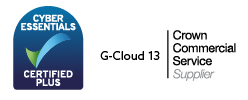In the ever-evolving technology seascape, contact centre leaders face both opportunities and challenges as they strive to optimise operations and enhance customer experiences. From implementing AI to integrating omnichannel communication, technology change holds immense potential. However, careful consideration is essential before embarking on a transformation journey.
In this blog, we draw from the latest exclusive research initiative from the CCMA titled "Navigating the Technology Seascape" to explore key considerations for planning technology change in contact centres. These insights, gathered from real-world CX leaders, will provide valuable guidance for effective technology adoption.
Read on to find out more about the 5 key factors to consider when planning for change.
- How will you bridge the gaps between your IT & Operations teams?
- How will your organisation make decisions? Will you run everything centrally or through a more localised structure?
- How agile is your organisation? Can you adapt quickly?
- Stay in the loop! How are you embracing emerging technologies and outpacing the competition?
- How do you foster effective collaboration between teams?
How will you bridge the gaps between your IT & Operations teams?
The most successful transformation projects usually have a mediator who can speak the language of both Operations and IT, acknowledging the differing objectives and requirements in these two areas may be different. Organisations looking to successfully navigate the choppy waters of change should look internally to see if they have someone who possesses these skills and involve them on both sides.
These mediators act as liaisons, building relationships, establishing open communication channels, and encouraging collaboration. By actively listening to both sides, they bridge gaps in understanding and find common ground. In the research paper leaders discussed how showing IT engineers real-world interactions can help them understand customer needs and this may not have happened without a mediator who understood both worlds.
Skilled mediators foster a collaborative environment, maximizing the potential of technology change, driving operational efficiency, and enhancing the customer experience. They are essential for bridging the IT and operations gap in contact centres by empowering collaboration, possessing technical expertise, and facilitating effective communication. By investing in these resources, contact centres navigate technology change smoothly, improving performance, streamlining operations, and enhancing customer satisfaction.
How will your organisation make decisions? Will you run everything centrally or through a more localised structure?
When planning technology change in contact centres, it's important to carefully choose the decision-making structure for effective management and implementation. You could decide to have a centralised structure or allow the contact centre itself to lead the decision-making process.
A centralised structure brings control and decision-making to a higher level, which helps avoid redundant resources and ensures alignment across the organisation's technology infrastructure. However, it can create a gap between the central team and the contact centre, increasing the risk of decisions that don't fully meet customer needs.
If the contact centre leads the decision-making, the risk of overlooking customer-centric decisions is reduced. This approach also enables better flexibility, faster response times, and the ability to address specific requirements. However, decisions made solely by the contact centre may not always align with the broader organisational needs, potentially causing inefficiencies and future problems.
CX leaders in the report emphasise the importance of involving each affected business area in the decision-making process to ensure an optimal outcome from technological change for all parties. A hybrid model that combines centralised and localised elements can offer the best of both worlds, maximising efficiency and customer satisfaction by leveraging economies of scale and a deeper understanding of the contact centre.
Ultimately, the optimal decision-making structure depends on the unique needs and priorities of the contact centre and the organisation as a whole. By carefully weighing the pros and cons of centralised and localised structures, contact centres can choose an approach that best meets their needs.

How agile is your organisation? Can you adapt quickly?
Agile methods in contact centres can enhance efficiency for technology changes. They provide a flexible and iterative approach, allowing contact centres to quickly adapt to evolving technology needs. These methods encourage collaboration, frequent communication, and iterative development. By dividing projects into smaller parts, contact centres can promptly respond to changing technology, market dynamics, and customer expectations.
An important benefit of agile methodologies is their ability to foster cross-departmental collaboration. Involving representatives from IT, operations, and relevant teams ensures all stakeholders have a voice, promoting alignment and shared understanding. Regular reviews allow contact centres to assess progress, identify challenges, and make necessary adjustments. This iterative feedback loop ensures technology implementations remain aligned with business goals and customer needs.
One CX leader interviewed for the report described how moving to an agile structure had helped them to become stronger at articulating the problem, identifying the solution, assessing the resource demands and outlining the benefits. By leveraging agile methodologies, contact centres can adapt swiftly, foster collaboration, and drive continuous improvement.
Stay in the loop! How are you embracing emerging technologies and outpacing the competition?
In the rapidly evolving contact centre landscape, staying at the leading edge of technology is crucial to maintaining a competitive advantage. By keeping a close eye on emerging technologies, contact centre leaders can proactively identify innovative solutions that enhance operations and customer experiences.
Maintaining visibility of emerging technologies allows leaders to anticipate future trends and adapt their strategies accordingly. By staying informed about the latest advancements, they can identify opportunities for process optimisation, automation, and enhanced customer engagement.
Moreover, being aware of emerging technologies helps contact centres stay ahead of the competition. By embracing innovative solutions early on, they can differentiate themselves by offering cutting-edge capabilities and staying at the forefront of customer service excellence.
In the report, CX leaders discussed the importance of contact centre leaders deliberately looking outside of their comfort zone to be aware of what is possible and keep their contact centre ahead of customer needs.
To effectively stay at the leading edge, contact centres can leverage industry resources, attend conferences and webinars, and engage in partnerships with technology providers. By maintaining a curiosity CX leaders ensure they are aware of emerging technologies and their potential benefits to their team.
How do you foster effective collaboration between teams?
Effective collaboration between teams is crucial for successful technology change in contact centres. By promoting collaboration, contact centres can leverage diverse expertise, enhance communication, and ensure the smooth implementation of technological advancements.
To foster effective collaboration, it is essential to establish clear channels of communication and encourage open dialogue. This allows teams to share insights, address concerns, and align their goals and expectations. Regular meetings and updates can facilitate ongoing collaboration and keep everyone informed about the progress and challenges of technology change initiatives.
Encouraging a culture of collaboration also involves breaking down silos and promoting cross-functional cooperation. By facilitating collaboration between IT, operations, customer service, and other relevant teams, contact centres can benefit from a holistic approach that considers different perspectives and ensures comprehensive solutions.
Furthermore, providing the necessary resources and support for collaboration is essential. This includes tools for effective communication and collaboration, training opportunities to enhance collaboration skills, and recognition for collaborative efforts and achievements.
By fostering effective collaboration, contact centres can harness the collective intelligence and skills of their teams, leading to more seamless technology change implementations, improved customer experiences, and enhanced operational efficiency.
These are just a few of the key considerations for planning technology change in contact centres. To delve deeper into the full learnings and recommendations, download the latest CCMA research initiative supported by Route 101 from the link below. This comprehensive report, based on real-world insights from CX leaders, will equip you with the knowledge and guidance needed to navigate the ever-changing technology seascape and drive successful transformation within your contact centre.
Click the link below to download the report and unlock the strategies for effective technology change in the contact centre.



